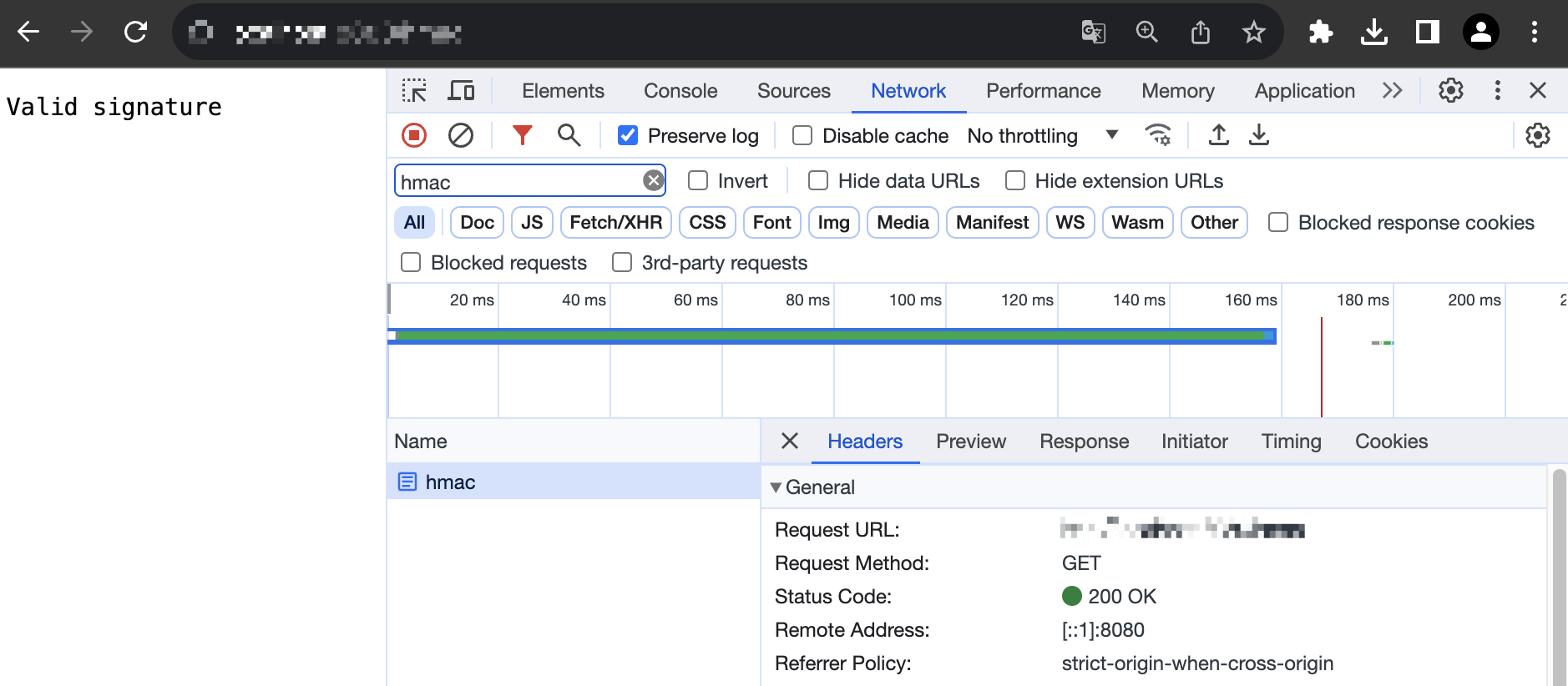HMAC 数字签名
HMAC(Hash-based Message Authentication Code)是一种基于哈希函数的消息认证码,主要用于验证数据的完整性和身份认证。该示例使用
Web Crypto API实现 HMAC-SHA256 签名,并将签名信息存入请求头,配合源站实现数据完整性校验或身份认证,开发者可根据需要修改代码。注意
该示例要求与源站配合使用,即源站需要具备对应的签名校验算法。
现网使用该示例提供的代码,需要按照注释修改代码。
示例代码
function uint8ArrayToHex(uint8Array) {return Array.prototype.map.call(uint8Array, x => ('0' + x.toString(16)).slice(-2)).join('');}async function generateHmac({ secretKey, message, hash }) {const encoder = new TextEncoder();const secretKeyBytes = encoder.encode(secretKey);const messageBytes = encoder.encode(message);const key = await crypto.subtle.importKey('raw', secretKeyBytes, { name: 'HMAC', hash }, false, ['sign']);const signature = await crypto.subtle.sign('HMAC', key, messageBytes);const signatureArray = new Uint8Array(signature);return uint8ArrayToHex(signatureArray);}async function handleRequest(request) {const secretKey = 'YOUR_SECRET_KEY';// 使用时请修改为需要被签名的信息,一般为多个数据的组合,例如:时间戳+请求相关信息等const message = 'YOUR_MESSAGE';// hash 取 SHA-1、SHA-256、SHA-384、SHA-512 之一const hmac = await generateHmac({ secretKey, message, hash: 'SHA-256' });request.headers.set('Authorization', `HMAC-SHA256 ${hmac}`);return fetch(request);}addEventListener('fetch', event => {event.passThroughOnException();event.respondWith(handleRequest(event.request));});
示例预览
在 PC 端与移动端的浏览器地址栏中输入匹配到边缘函数触发规则的 URL(如:
https://example.com/hmac),即可预览到示例效果。身份校验未通过。

身份校验通过。

相关参考